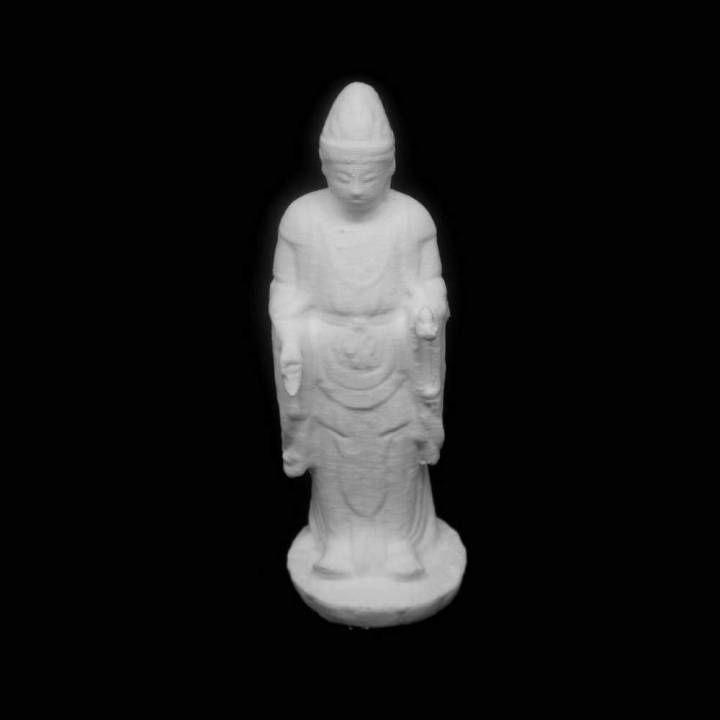
Reklama
3D tiskárny



AONN.cz
Sp┼Ö├ítelen├ę Weby
|
3D modely ARTStatue of Kichijoten at The British Museum, London

Title Statue of Kichijoten Artist Unknown Date Heian Period, 11th Century Medium Wood Dimensions Height (without plinth) 109.00 cm Accession # VH 1999 Associated with harvest, fertility, and fortune, Kichijoten is one of the female Buddhist deities derived from Laksmi, the wife of Vishnu, worshipped as the goddess of fortune in the Hindu pantheon. She is sometimes depicted with the guardian Bishamon to whom she is wife or sister. The deity is shown in contemporary Chinese robes. One hand makes the "seigan'in" gesture signifying the granting of desires, and the other holds the "hoju" jewel of enlightenment. (Label copy, VH 1999), Smith et al 1990 Associated with harvest, fertility and fortune, Kichijoten is one of the female deities derived from Laksmi, the wife of Vishnu, worshipped as the goddess of fortune in the Indian Hindu pantheon. She is sometimes depicted together with Bishamonten, to whom she is wife or sister. The deity is here dressed, in Heian period fashion, in Chinese robes, and indeed has features similar to those of some Tang dynasty sculptures. One hand makes the 'segan'in' gesture, signifying the granting of desires, and in her other hand she holds the 'hokyu' jewel. The piece is carved in 'ichiboku zukuri' style out of one block of wood, although there is some later restoration, and the hands and feet are replacements. Any original pigment has vanished.,Zwalf 1985 ┼Üri (Kichij┼Źten), goddess of good fortune, sometimes shown with Vai┼Ťravaß╣ça (Bishamon) either as consort or sister, was particularly associated with good harvests. As here, she usually wears the elegant robes of a lady of Tang China, crowned, with in one hand the wishing jewel and with the other making the gesture of liberality. The figure is partly restored. n├íhodn├Ż v├Żb─Ťr model┼»
|
©Ofrii 2012
| |||